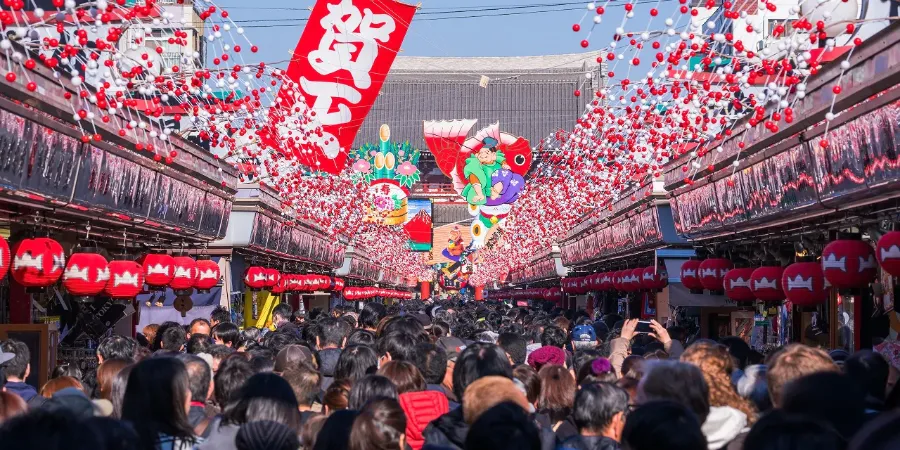UNIQUE JAPANESE TRADITIONS ON NEW YEAR’S EVE
Like many countries, Japan uses the solar calendar and thus celebrates the new year on the 1st of January. The new year in Japan is called “Oshougatsu’. This article will give u a deeper look into these traditions

Osouji house cleaning day
When the new year is near, the Japanese usually deep-clean their house. According to their belief, the god Toshigami -sama would come to visit on the first day of the new year. Thus, their house must be clean to welcome the god, as well as luck.
.png?generation=1671767828717682&alt=media)
Decorating their house
On the 28th or 30th of the last month of the year, people will start decorating their houses. According to Japanese traditional oral beliefs, the god Toshigami-sama would descend to the world and hide in the Japanese cedar trees, and thus the people would decorate the cedar tree in front of their houses beautifully. Additionally, the door frame would also be decorated with objects such as mandarins symbolizing prosperity, grass-braided rope to pray for fortune, or white strips of paper to ward off evil spirits.
.png?generation=1671767880345650&alt=media)
Bell-ringing ceremony - Joya no Kane
This is a long-standing tradition held in Japan on the night of the new year. To mark the passing of an old year and the beginning of the new year, the bell would be rung 108 times. Additionally, the 108 sounds symbolizes the 108 worldly desires according to Buddihsm. Joya no Kane is also meant to purify everyone’s mind and soul in a new year.
.png?generation=1671767915360927&alt=media)
Visiting Shrines or Temples - Hatsumode
To pray for a happy new year, the people often visit the temples or shrines on the first day of the year. This is one of the most well-known traditions in Japan during this time of the year. Large shrines like Meiji Jingu will be open 24/7 starting from the new years eve.
When going to famous shrines and temples, it is not uncommon to find people standing in long lines to pray. On this special occasion, people would also draw Omikuji - a form of fortune-telling, to predicts special events that may occur within the year. The lots are usually cost 100, 500, or 1000 yen.
.jpg?generation=1671767932432329&alt=media)
Nengajo New Year Greeting card
Sending a Nengajo New Year Greeting card is an indispensable part of the Japanese New Year traditions. People are usually busy preparing beautiful cards with wishes to send to their relatives, friends, and colleagues during the last month of the year. When sending cards to further locations, people would have sent the cards at the post office 3-4 days before the new year.
.png?generation=1671767945050294&alt=media)
Above was the entire article on unique Japanese traditions on New Year’s Eve. GoEMON hopes that the article was of use to you.
Don’t forget to follow GoEMON Global for the latest updates on life in Japan!